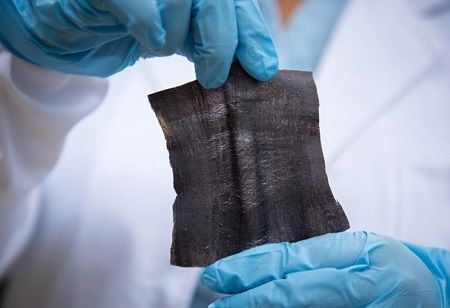Professor Cho Jin-han's team from the Department of Chemical and Biological Engineering and KU-KIST Graduate School of Converging Science and Technology, along with Dr. Ko Yong-min's team from the Daegu Gyeongbuk Institute of Science and Technology, have developed a novel nanoparticle-based, binder-free textile-type supercapacitor electrode. This innovation utilizes a carbon nano-oligomer modified with a hydrophilic functional group. Their findings were published in the prestigious journal, Energy Storage Materials (IF = 20.4).
Supercapacitors function by storing electric charges via rapid surface reactions on electrodes. Thus, using nanoparticles with a high specific surface area can enhance the active area, improving charge transfer efficiency. Effective utilization of these nanoparticles requires their uniform distribution within the electrode, achieved through stable integration with conductive fillers or binders.
The traditional slurry coating method for electrode manufacturing has drawbacks for nanoparticle-based electrodes. To achieve high energy density, the proportion of supporting components to active materials must be minimized. However, the high specific surface area of nanoparticles demands an increased ratio of supporting components for slurry production. Additionally, the insulating organic ligands on nanoparticle surfaces create resistance within the electrode. Slurries based on physical mixing often do not ensure a uniform distribution of nanoparticles and conductive additives, complicating the production of efficient electrodes.
Wettability between an electrode and an electrolyte is another crucial factor in charge transfer. In supercapacitors using aqueous electrolyte solutions, non-polar materials like carbon nanotubes, carbon black, or binders such as poly(vinylidene fluoride) create a thick diffusion layer at the electrode-electrolyte interface, hindering charge transfer. Moreover, carbon nanotubes and carbon black can aggregate, leading to uneven charge distribution.

